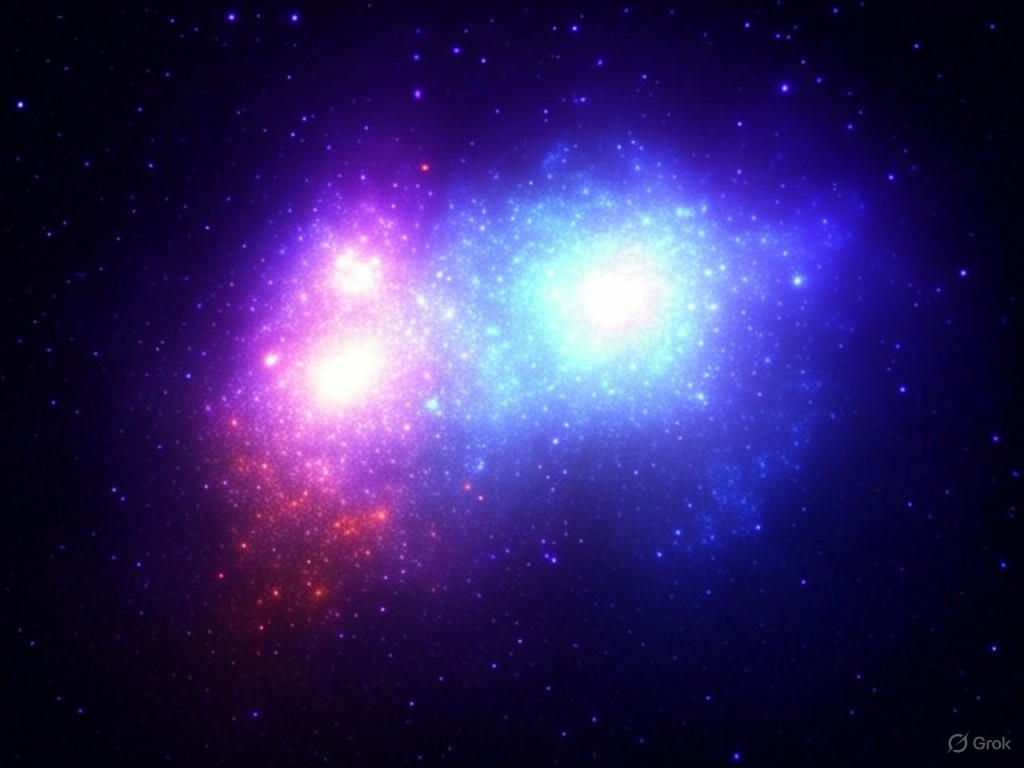Cosmic Collision: Galaxy Clusters Set to Clash Again, Unveiling Dark Matter Secrets
In a stunning revelation from the depths of space, astronomers using NASA’s Chandra X-Ray Observatory have spotted two massive galaxy clusters hurtling toward each other for a second monumental collision. This rare event, observed millions of light-years away, offers a unique window into the mysterious forces shaping the universe, including the elusive nature of dark matter. The discovery not only captivates with its sheer scale but also promises to deepen our understanding of the cosmic web that binds galaxies together.
Galaxy clusters are among the largest structures in the universe, comprising hundreds to thousands of galaxies held together by gravity, along with vast amounts of hot gas and dark matter. When two such clusters collide, the impact releases an unimaginable amount of energy, sending shockwaves through space and creating a spectacle visible through X-ray emissions. The Chandra Observatory, renowned for its ability to detect these high-energy signatures, has captured detailed images of the clusters’ approach, revealing that this isn’t their first encounter. Evidence suggests a prior clash occurred, and now, drawn by relentless gravitational pull, they are on course for another.
What makes this event particularly exciting for scientists is the opportunity to study dark matter, a mysterious substance that makes up roughly 27% of the universe yet remains invisible and detectable only through its gravitational effects. During a collision of this magnitude, dark matter is believed to pass through ordinary matter without interacting, allowing researchers to map its distribution and behavior. Early data from this impending crash indicates that dark matter may separate from the hot gas and galaxies during the impact, providing clues about its properties. This could challenge or confirm existing theories about how dark matter influences the formation of cosmic structures over billions of years.
Beyond dark matter, the collision offers insights into the dynamics of galaxy clusters themselves. The intense heat and pressure generated during such events can trigger the birth of new stars or disrupt existing ones, reshaping entire regions of space. Astronomers are also keen to analyze the shock fronts—massive waves of energy rippling through the clusters—to better understand the physics of these extreme environments. Each observation adds a piece to the puzzle of how the universe evolved from the Big Bang to the intricate tapestry of galaxies we see today.
As the scientific community eagerly awaits the full impact of this cosmic rerun, the data collected could reshape our models of the universe. This second collision serves as a natural laboratory, testing theories that would otherwise remain speculative. With every X-ray image and measurement, we edge closer to unraveling the hidden forces at play in the cosmos. The dance of these galaxy clusters, though distant and ancient, reminds us of the dynamic, ever-changing nature of space—a realm where even the largest structures are not immune to the forces of gravity and time.


